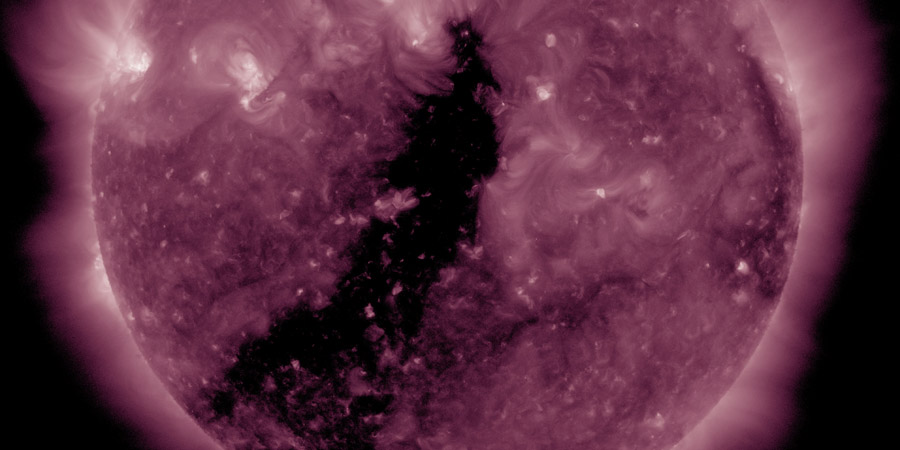Coronal hole faces Earth
Friday, 24 March 2017 20:48 UTC

The coronal hole solar wind stream is now starting to wane and the auroral oval has retreated back to higher latitudes. Does that mean we are in for a long quiet period? Fortunately not as we have yet another coronal hole facing our planet today!
A coronal hole is facing Earth. Enhanced solar wind could arrive in ~3 days - Follow live on https://t.co/T1Jkf6i4Cb pic.twitter.com/Xy7CsacwAE
— SpaceWeatherLive (@_SpaceWeather_) March 24, 2017
This is starting to become a famous coronal hole as this coronal hole has been around for well over a year in all kinds of shapes and sizes. It also caused some decent geomagnetic storming when it faced Earth. During the last rotation it caused moderate G2 geomagnetic storm conditions (Kp6) on 1 March.
Lets compare how this coronal looks like right now and how it looked like during the previous rotation. Indeed, like two drops of water don't you think? It hardly changed during its trip around the far side of the Sun. The most northern part of the coronal hole actually looks like it increased slightly in size. That is excellent news as that means we should expect similar solar wind conditions on this rotation as we had during the previous rotation. Based on these facts we conclude that it is not out of the question that we will again experience moderate G2 geomagnetic storm conditions once the solar wind stream arrives. The solar wind stream should take about 3 days to cover the distance between the Sun and the Earth so the solar wind stream is likely to arrive on 27 March. We issue a moderate G2 geomagnetic storm watch for this coming Monday, 27 March 2017.
Thank you for reading this article! Did you have any trouble with the technical terms used in this article? Our help section is the place to be where you can find in-depth articles, a FAQ and a list with common abbreviations. Still puzzled? Just post on our forum where we will help you the best we can!
Latest news
Latest forum messages
Support SpaceWeatherLive.com!
A lot of people come to SpaceWeatherLive to follow the Solar activity or if there is a chance to see the aurora, but with more traffic comes higher costs to keep the servers online. If you like SpaceWeatherLive and want to support the project you can choose a subscription for an ad-free site or consider a donation. With your help we can keep SpaceWeatherLive online!
Space weather facts
| Last X-flare | 2025/06/19 | X1.9 |
| Last M-flare | 2025/10/03 | M1.2 |
| Last geomagnetic storm | 2025/10/03 | Kp5 (G1) |
| Spotless days | |
|---|---|
| Last spotless day | 2022/06/08 |
| Monthly mean Sunspot Number | |
|---|---|
| September 2025 | 129.8 -3.7 |
| October 2025 | 140.1 +10.3 |
| Last 30 days | 131.3 -1.2 |





